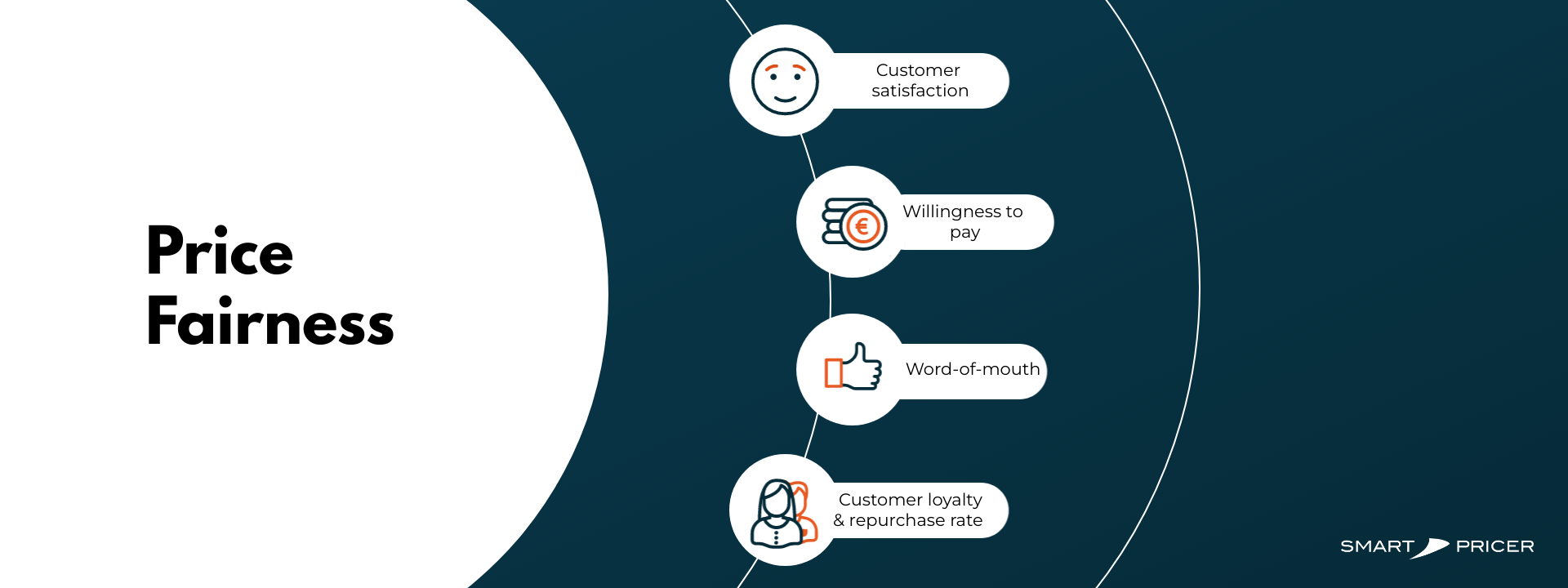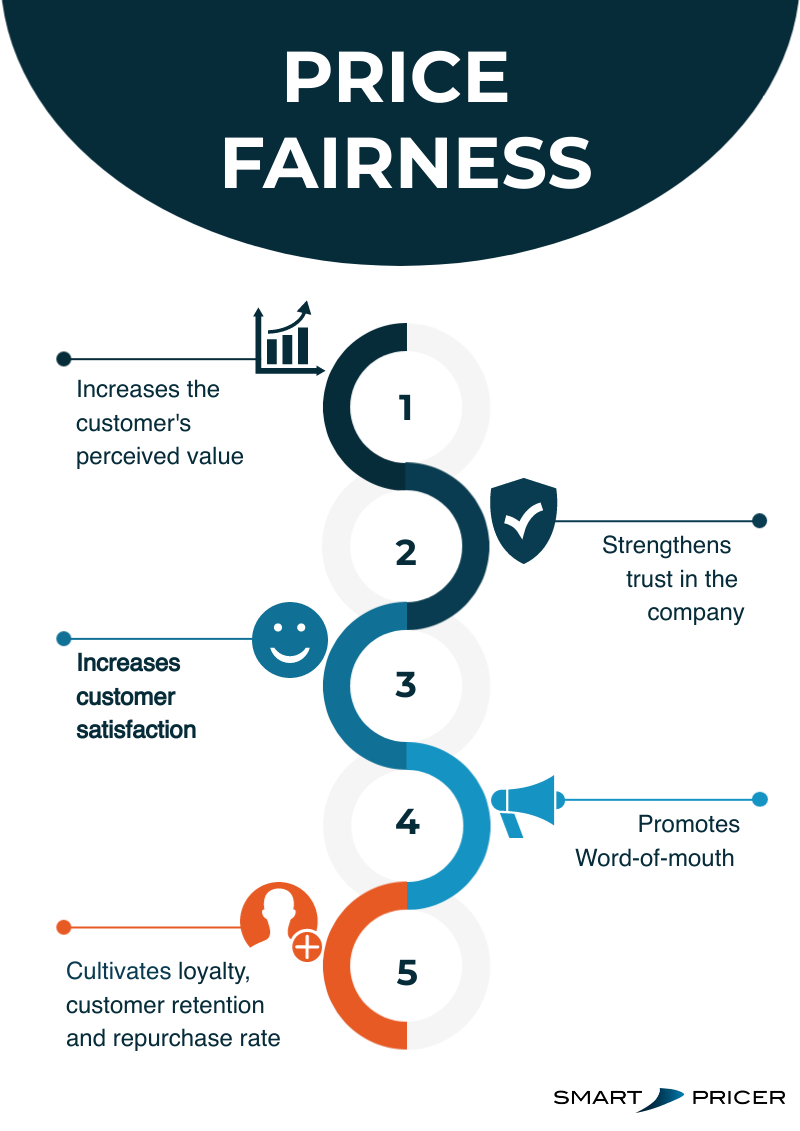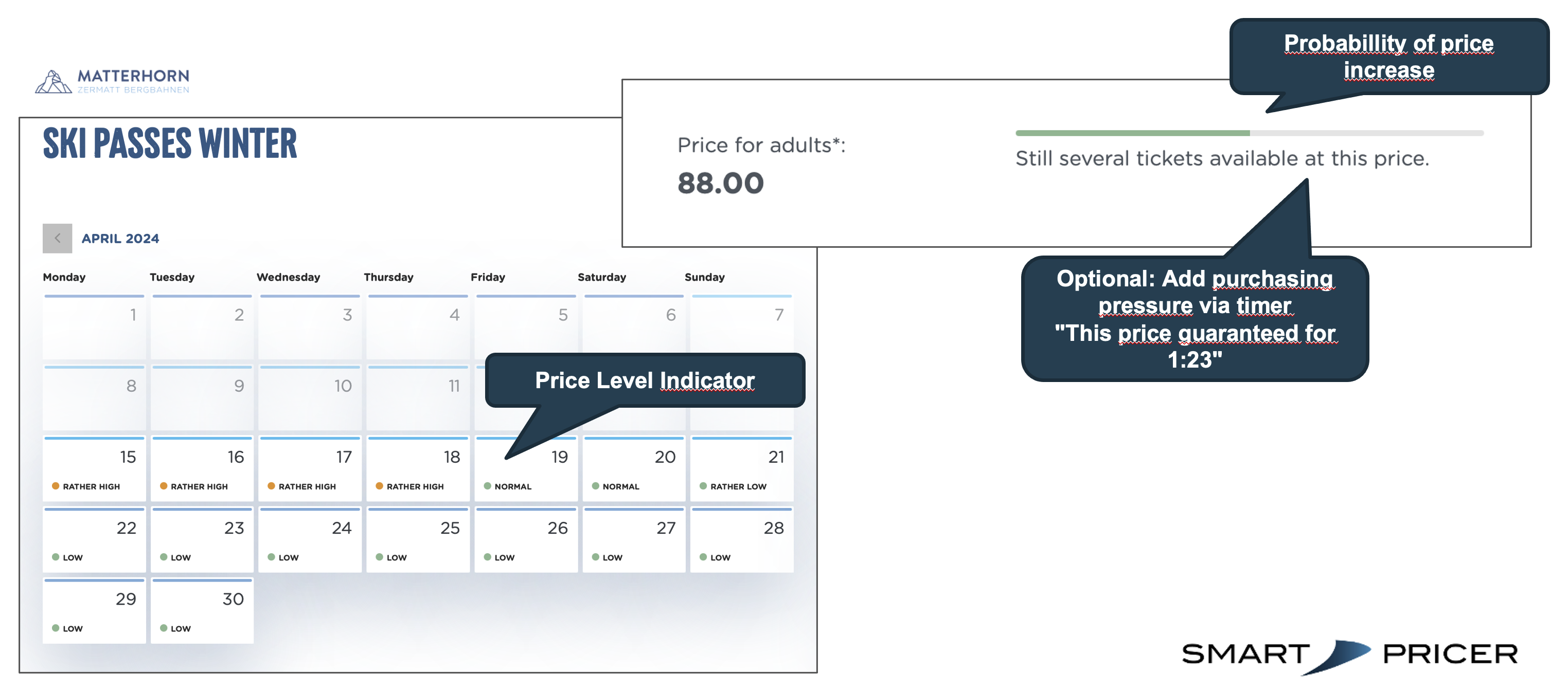
INNSBRUCK, BERLIN – April 2024
Price, sales volume and costs are the three most important factors for profitability and form the essential part of the profit equation. By optimizing these factors, a company can increase its profitability and ensure its long-term success. The most important determinant of profitability, both in theory and in practice, is price. In addition to its direct financial impact on profit, price also plays a crucial role in customers’ perception of price fairness.
Price fairness is the concept of how the customer perceives the price. Whether or not a price is considered fair has a demonstrably high influence on:
- Perceived value of the product
- Trust in the company providing the product
- Customer satisfaction
- Word-of-mouth behavior
- Willingness to pay
- Customer loyalty
- Purchasing behavior
There are several factors contributing to price fairness, such as the price-performance ratio, previous purchasing experiences, and most importantly, price transparency. Together, these elements have an impact on brand perception, and serve as key pillars for sustainable success in the highly competitive winter sports industry.

At Smart Pricer we have identified three critical aspects to consider when building your pricing strategy to ensure that prices are perceived as fair:
- Price Transparency has the most significant influence on how customers perceive price fluctuations. If it is clear how prices are determined, and what factors influence these determinations, prices are perceived as fair. The aim here is to ensure that customers can understand the reasons for price changes, and not perceive them as unclear, and therefore, unfair.
- Communication: How companies communicate price information will have an impact on the perception of price fairness, and is closely linked to transparency. If the reasons for price adjustments are clearly communicated, this increases customer confidence and improves their perception of fairness.
- Meeting Customer Expectations: If customers expect stable prices and perceive abrupt changes as unfair, this will have a detrimental effect on their perception of price fairness. To maintain the perception of fairness, companies must align with their customers’ expectations regarding pricing.
Smart Pricer takes these aspects into account when designing pricing strategy – which we do with each of our partners individually. Our aim is not just to increase financial performance, but also to ensure lasting customer loyalty and satisfaction for our ski resorts.
Our Strategies:
a) Clearly communicating that prices only change in one direction promotes transparency. Customers can gain insight into the factors that influence price changes, for example purchasing tickets in advance will guarantee better prices. This strengthens trust and reinforces perceptions that the price is fair.
b) Option 1: Communicate upper price limits, like fixed maximum prices when purchasing on-site. This approach allows ski resorts to increase price transparency and enables customers to choose between buying lift tickets in advance online at a discounted rate, or at the ticket counter day-of for full price. This choice is completely informed (unlike airline tickets, for example).
c) Option 2: Create price transparency through the communication of ‘starting prices’ in both visual and written form. This includes displaying the current ticket price alongside the undisclosed maximum price and indicating the availability of tickets at the current price level – as shown here implemented in the online shop of Bergbahnen Zermatt

Price transparency in the Zermatt ski resort online shop
